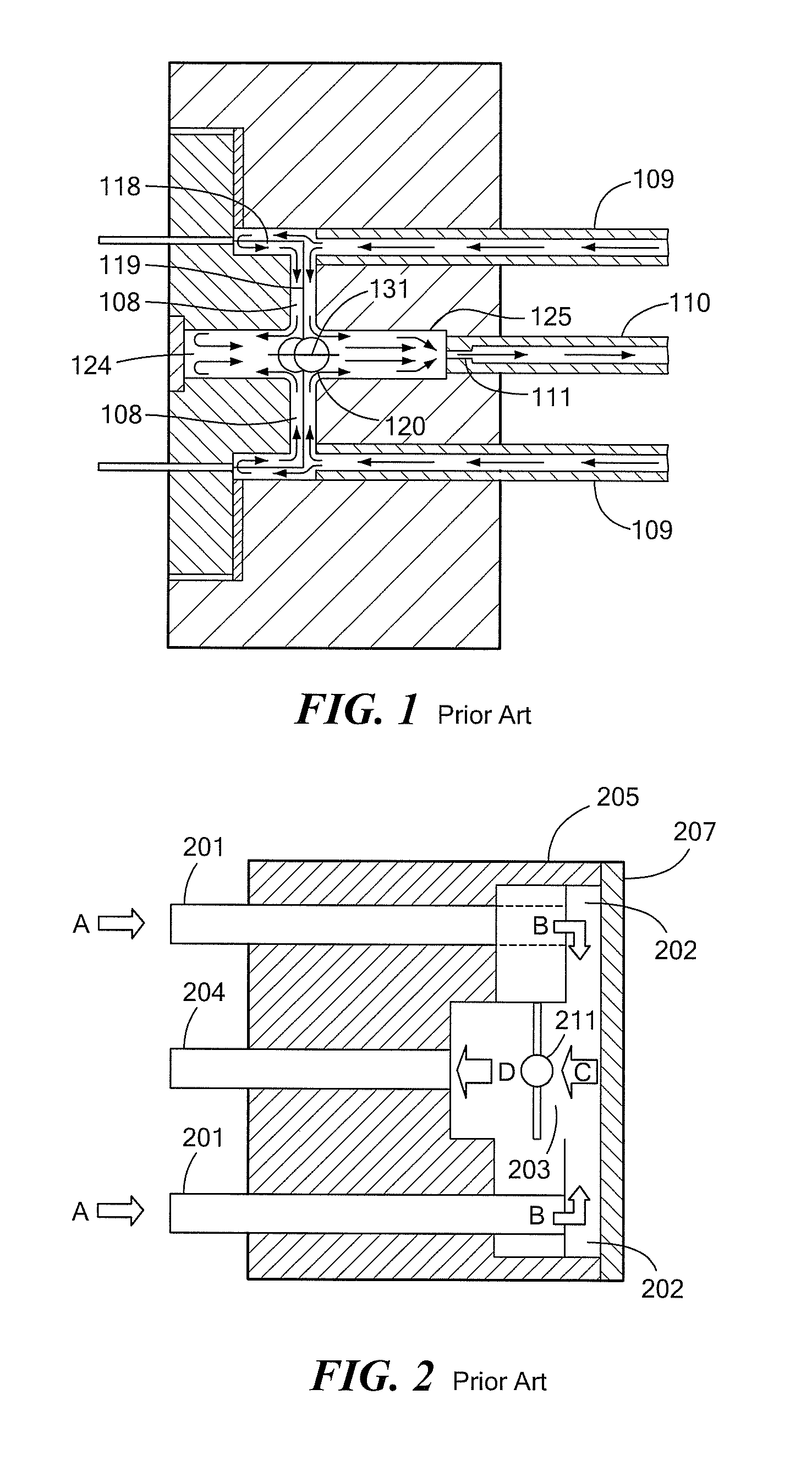Paramagnetic Gas Sensor Apparatus and Adjustment Method
a gas sensor and paramagnetic gas technology, applied in magnetic measurement, analogue computers, analogue and hybrid computing, etc., can solve the problems of not being corrosion resistant, limiting compact electronic design, and not matching the sensitivity achieved by havens, so as to minimize the effect of momentum, reduce or minimize flow-dependent imbalances, and mitigate unbalanced flow
- Summary
- Abstract
- Description
- Claims
- Application Information
AI Technical Summary
Benefits of technology
Problems solved by technology
Method used
Image
Examples
Embodiment Construction
[0042]Various features of an apparatus according to a preferred embodiment of the invention are illustrated in FIGS. 3-7, although equivalent design benefits could also be obtained for differing requirements such as absolute flow rates, containing the same essential elements. The test body in this embodiment is similar to that described in prior art. Various alternative embodiments are mentioned below.
[0043]The gas enters via the inlet gas port (1) in the manifold section (2) and is split internally into two flow channels (3) of equal dimensions. The internal split means that the balance of flow can be controlled via the part dimensions and manufacture rather than by the end user or external plumbing of the device, which may unintentionally cause an extra flow imbalance. However, this split can be implemented external to the device in an alternative embodiment. The gas then passes from the manifold section into the main header (4) which surrounds the paramagnetic suspension assembly...
PUM
| Property | Measurement | Unit |
|---|---|---|
| paramagnetic | aaaaa | aaaaa |
| magnetic field | aaaaa | aaaaa |
| magnetic susceptibility | aaaaa | aaaaa |
Abstract
Description
Claims
Application Information
 Login to View More
Login to View More - R&D
- Intellectual Property
- Life Sciences
- Materials
- Tech Scout
- Unparalleled Data Quality
- Higher Quality Content
- 60% Fewer Hallucinations
Browse by: Latest US Patents, China's latest patents, Technical Efficacy Thesaurus, Application Domain, Technology Topic, Popular Technical Reports.
© 2025 PatSnap. All rights reserved.Legal|Privacy policy|Modern Slavery Act Transparency Statement|Sitemap|About US| Contact US: help@patsnap.com



